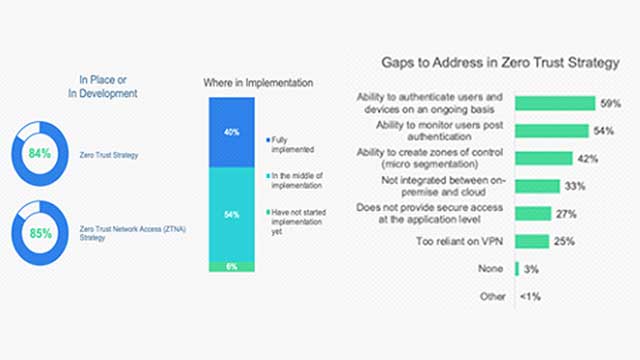Zero-trust has been a hot topic for discussion in the cybersecurity space for some years now. Though many organizations support the zero-trust security model, many still face a challenge to consistently authenticate genuine users and devices in the network. Fortinet has unveiled the findings of the Global State of Zero Trust Report. According to this report, the survey reveals that while most organizations have a vision of zero trust or are in the process of implementing zero-trust initiatives, more than half of organizations cannot translate this vision into the solutions they are implementing because they lack some basic core fundamentals of zero trust.
According to IBM, the global average cost of a data breach is now at a whopping USD 4.24M. That is why many organizations are now looking to shift from implicit trust to zero trust. Emphasizing the importance of zero-trust Rajesh Maurya, Regional Vice President, India & SAARC at Fortinet said, “With the evolving threat landscape, transition to work-from-anywhere, and the need to securely manage applications in the cloud, the shift from implicit trust to zero trust is top of mind for organizations. Our survey shows while most organizations have some form of a zero-trust strategy in place, they fall short of a holistic strategy and struggle to implement some core zero-trust security basics. An effective solution requires a cybersecurity mesh platform approach to address all zero-trust fundamentals across the infrastructure, including endpoint, cloud, and on-premises, otherwise, the result is a partial, non-integrated solution that lacks broad visibility.”
Key highlights from the report are as follows:
A FortiGuard Labs Threat Landscape Report demonstrated an increase in the volume and sophistication of attacks targeting individuals, organizations, and increasingly critical infrastructure. Organizations are looking for solutions to protect against these evolving threats and zero trust is top of mind, but for multiple reasons. Additionally, the shift to work-from-anywhere has put a spotlight on zero-trust network access (ZTNA) in particular, as organizations need to protect important assets from workers connecting from poorly protected home networks.
Confusion Over Defining Zero-Trust Strategies
The report illustrates some confusion about what comprises a complete zero-trust strategy. Respondents indicated they understand zero trust (77%) and ZTNA (75%) concepts and over 80% reported already having a zero-trust and/or ZTNA strategy in place or development. Yet, over 50% indicated being unable to implement core zero-trust capabilities. Nearly 60% indicated they do not have the ability to authenticate users and devices on an ongoing basis and 54% struggle to monitor users post-authentication.
This gap is concerning because these functions are critical tenets of zero-trust and it brings into question what the actual reality of these implementations is across organizations. Adding to the confusion are the terms “Zero Trust Access” and “Zero Trust Network Access,” which are used sometimes interchangeably.
 Zero Trust Is Top of Mind and Priorities Are Varied
Zero Trust Is Top of Mind and Priorities Are Varied
Priorities for zero trust are “minimizing the impact of breaches and intrusions” followed closely by “securing remote access” and “ensuring business or mission continuity.” “Improving user experiences” and “gaining flexibility to provide security anywhere” were also top priorities.
 “Security across the entire digital attack surface” was the single most important benefit cited by respondents, followed by a “better user experience for remote work (VPN).”
“Security across the entire digital attack surface” was the single most important benefit cited by respondents, followed by a “better user experience for remote work (VPN).”

A vast majority of the survey respondents believe that it is vital for zero-trust security solutions to be integrated with their existing infrastructure, work across cloud and on-premises environments, and be secure at the application layer. However, more than 80% of respondents indicated that it is challenging to implement a zero-trust strategy across an extended network. For organizations without a strategy in place or development, obstacles included a lack of skilled resources with 35% of organizations using other IT strategies to address zero trust.
The report is based on a global survey of IT decision-makers aimed at better understanding how far along organizations are in their zero-trust journey. The survey was conducted in September 2021 with 472 IT and security leaders from 24 different countries, representing nearly all industries, including the public sector.



